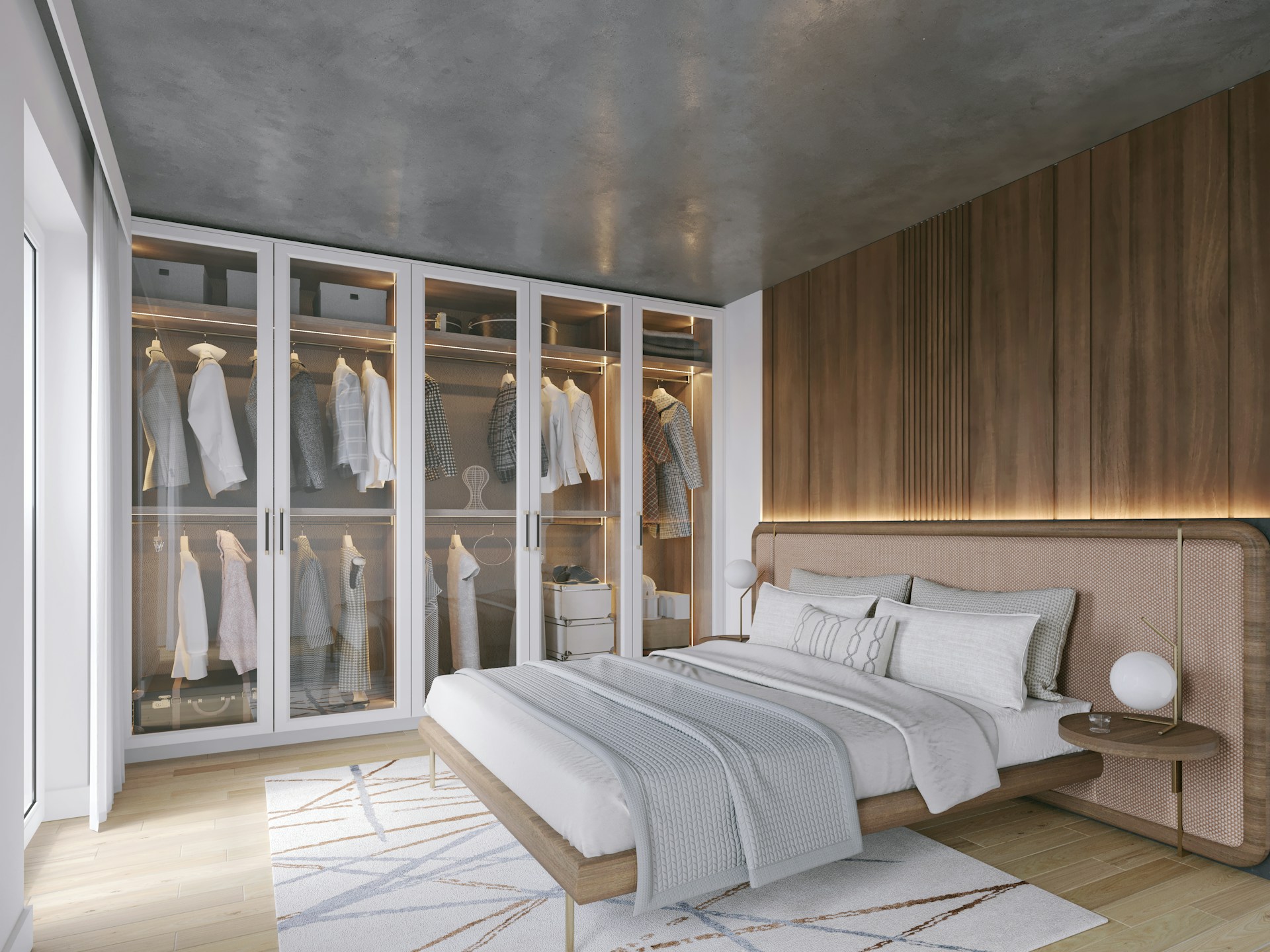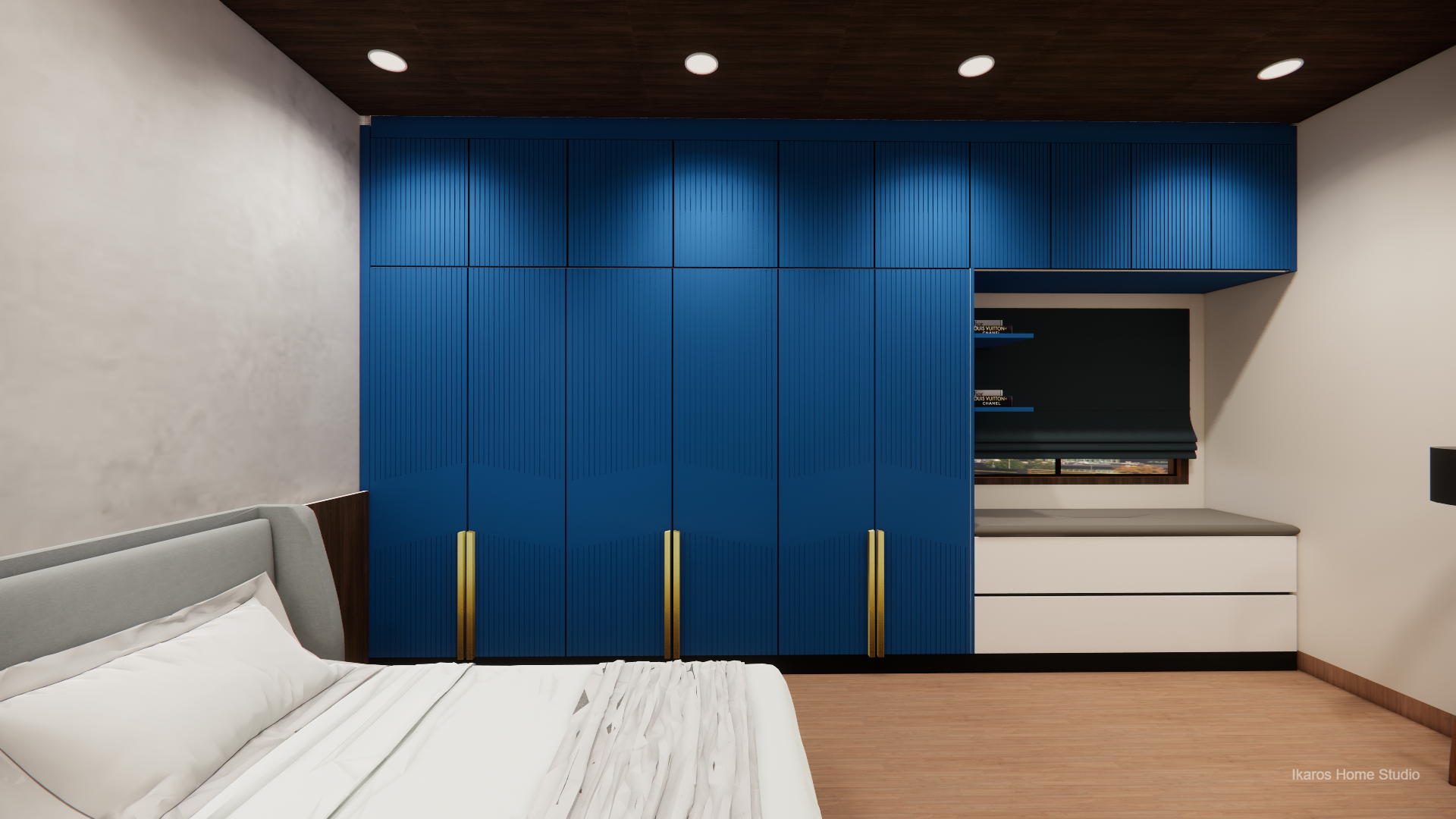
Sliding Wardrobes vs Hinged Wardrobes
Aswath Gunasekaran
3/25/20254 min read

Introduction to Wardrobe Types
Wardrobes serve as essential furniture pieces in every household, offering not only storage but also contributing to the overall aesthetic of the room. In India, two predominant types of wardrobes are recognized: sliding wardrobes and hinged wardrobes. Each of these styles presents unique characteristics and functionalities that cater to various needs and preferences.
Sliding wardrobes are known for their space-saving design. They feature doors that glide effortlessly on tracks, allowing for easy access to clothing and accessories without requiring additional floor space. This makes them particularly suitable for compact living areas often found in urban settings. Additionally, sliding wardrobes offer a modern and sleek look, often incorporating reflective surfaces or intricate designs that can enhance the visual appeal of a room.
On the other hand, hinged wardrobes are classic storage solutions that swing open on hinges. This traditional design is commonly associated with larger rooms, where the extra space permits the doors to extend outward without restrictions. Hinged wardrobes can be a great choice for individuals who prefer a more classic aesthetic, as they often come with detailed carvings and materials that evoke a timeless charm.
Choosing the right wardrobe is vital and involves evaluating several factors, such as space availability, personal style preferences, and functional requirements. For instance, a sliding wardrobe may be advantageous in a smaller space by maximizing usability, while a hinged wardrobe can serve as an eye-catching centerpiece in a larger room. This comprehensive guide aims to delve deeper into the distinct attributes of sliding and hinged wardrobes in India, assisting readers in making informed decisions tailored to their specific circumstances and preferences.
Cost Comparison of Sliding and Hinged Wardrobes
When considering the costs associated with wardrobes, both sliding and hinged options present unique financial aspects that can influence a buyer's decision in India. Initially, the cost of sliding wardrobes is often perceived to be higher than that of hinged wardrobes. This can be attributed to the mechanism required for sliding doors, which typically involves tracks and rollers that add to the overall expense. On average, homeowners may spend between INR 20,000 to INR 50,000 for a sliding wardrobe, depending on size, material, and design.
Conversely, hinged wardrobes, which operate on conventional door hinges, generally fall within a lower price range. A basic hinged wardrobe can start around INR 15,000, with prices escalating to INR 40,000 or more for larger or custom-built options. Installation fees for both types of wardrobes can vary, with professional installation for sliding wardrobes being slightly more expensive due to the complexity of the sliding mechanism. Typically, installation can add INR 2,000 to INR 8,000 to the overall cost, irrespective of the wardrobe type.
In terms of long-term maintenance, sliding wardrobes may require occasional servicing of the sliding mechanisms, which could incur additional costs over time. For instance, replacement of wear components can range from INR 500 to INR 2,000, depending on the specific issue. On the other hand, hinged wardrobes often need minimal maintenance, and the main concern is the wear of the hinges and the doors themselves. This difference in ongoing maintenance can subtly influence the total cost of ownership over many years.
Factors influencing price include material quality, which plays a significant role in the durability and longevity of both types. Solid wood will cost more upfront than particle board. Custom designs and brand reputation can significantly impact the final pricing for both sliding and hinged wardrobes. Ultimately, the decisions regarding which wardrobe type to select in India will intricately tie to individual preferences, budget constraints, and long-term value considerations.
Pros and Cons of Sliding Wardrobes
Sliding wardrobes have become increasingly popular in India, particularly in modern homes where space efficiency and aesthetics play a vital role. One of the primary advantages of sliding wardrobes is their ability to save space. Unlike hinged wardrobes, which require ample room to swing open, sliding doors glide effortlessly along tracks, freeing up floor space and allowing for more flexible furniture arrangements. This space-saving feature makes sliding wardrobes particularly suitable for smaller rooms or areas with limited accessibility.
Another notable benefit of sliding wardrobes is their contemporary aesthetic. Often designed with sleek lines and a variety of finishes, these wardrobes can enhance the aesthetics of a room, contributing to a modern and stylish interior. The seamless look of sliding doors can also provide a superior visual appeal, making them a popular choice among homeowners looking to maintain a cohesive design theme.
However, sliding wardrobes are not without their disadvantages. One significant drawback is the potential issues with the tracks over time. Dust and debris can accumulate in the tracks, leading to difficulty in opening and closing the doors smoothly. This maintenance aspect is essential to ensure longevity and functionality. Additionally, sliding wardrobes may offer less versatility in design compared to hinged wardrobes. The configuration of the sliding mechanism can limit the overall internal layout and accessibility of the wardrobe's contents.
Furthermore, the effectiveness of sliding wardrobes depends significantly on the width of the opening. In narrow spaces, the functionality and ease of use may become compromised, as sliding doors require enough clearance to operate efficiently. Therefore, while sliding wardrobes come with several advantages, these potential drawbacks must also be carefully considered to assess their appropriateness for individual needs and space constraints.
Pros and Cons of Hinged Wardrobes
Hinged wardrobes have long been a staple in Indian homes, offering a blend of traditional aesthetics and practical functionality. One of the primary benefits of hinged wardrobes is their classic look, which can effortlessly complement various interior styles, from contemporary to vintage. Their design offers a wide array of choices, allowing homeowners to select from diverse materials, finishes, and colors. In addition, hinged wardrobes are readily customizable; interior layouts can be tailored to meet individual storage needs, making them a versatile choice for various household items.
Moreover, hinged wardrobes often provide a more robust build. Since the doors are mounted on hinges, they generally exhibit enhanced durability compared to their sliding counterparts, making them less prone to mechanical failures. This sturdiness can translate into a longer lifespan, making them a potentially wise investment in the realm of furniture. The ease of access to the entire interior space is another advantage, as users can view all their belongings at once, allowing for effective organization and retrieval.
However, hinged wardrobes also come with certain drawbacks that should not be overlooked. One notable disadvantage is their requirement for more space to operate. As the doors swing open, they need ample clearance, which can be a significant limitation in smaller rooms. Additionally, the hinges themselves may wear out over time, leading to repair concerns that could add to the overall maintenance costs. Another point of contention is the limited accessibility; compared to sliding wardrobes, which allow for easy access in tight spaces, hinged models can make reaching items at the back difficult once the doors are fully opened.
In light of these points, it is essential for homeowners to carefully weigh the pros and cons of hinged wardrobes to make an informed decision that aligns with their specific needs and living spaces.
Contact
contact@ikaroshomestudio.in
Social
+91 9944770860
Copyright© Ikaros Home Studio Private Limited
All Rights Reserved
T&C Apply*
